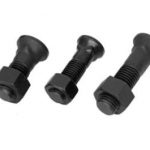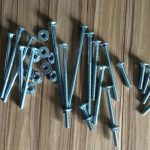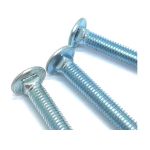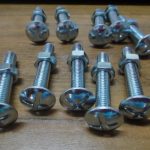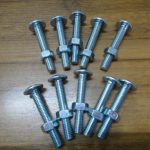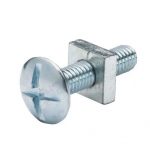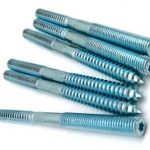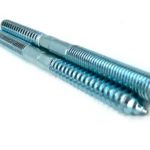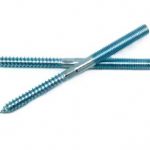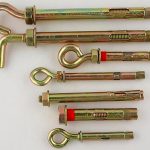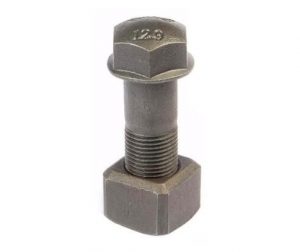
Track bolt is also called plow bolt or plough bolt, mostly used in the railway system and requires the high tensile and strength to assure the safety.
HAIYAN BOLT produce high strength track bolt.
Product Description:
Standard: OEM,customized.
GRADE:10.9 and 12.9
Material: Alloy steel. 40Cr, 35CrMo,
Size:from M16 to M27, 5/8” to 1-1/4”.
Surface finish:zinc plated, plain, black oxide, HDG
Packing: cartons with plywood pallet
Supply ability: 200tons per month
Assembly: normally with square nut.
Learning more about the track bolt:
A track bolt is used in railway construction as the means of securing the track’s rails to the surface they are applied to. In most cases, when a new rail system is built, the anchors for the track are made of concrete as opposed to the wood that they were traditionally made from. In order to secure the track to the concrete anchors, the track must be anchored into the concrete through the use of a mounting bracket that holds the track’s rail in place. Before the rail can be applied to the mounting bracket, the mounting bracket has to be anchored to the concrete. This is done through the use of a special track bolt.
Due to the amount of weight that any rail system’s track must carry at any given time, the anchoring system has to be as strong as possible to prevent any possibility of shifting. As a result, most mounting brackets, as well as the track bolts, are made out of hardened steel. The steel is treated to prevent it from becoming susceptible to rusting. These mounting systems that utilize the track bolts are mounted and anchored directly to the anchors for the track, regardless of whether the tracks are made out of concrete, wood, or any other material.
The track bolt itself consists of more than just a threaded bolt. Track bolts are usually three-part fasteners, consisting of a threaded bolt, a lug or nut, and a lock washer. The washer prevents the track bolt from shifting or becoming loose through the intense vibrations caused by a passing train.
The nut is placed on the mounting bracket, over the tap where the bolt will be threaded in, while the washer sits on top of the lug. The mounting bracket and the lug both have opposing teeth that, when engaged with each other, prevent any slippage in the fastening process. After the lock washer is applied on top of the lug, the bolt is centered over the lug and driven into the track’s anchor through the tap in the mounting bracket. Once the lock washer engages the bolt, the bolt is then kept from slipping or twisting loose.
As the track bolt is fastened and secured through the mounting bracket into the track anchor, the securing pin or track pin that is held by the mounting bracket is pulled downward. It then applies pressure to the rail’s bottom flange. This is the most common method for fastening a rail track to the set anchors for the rail system.

